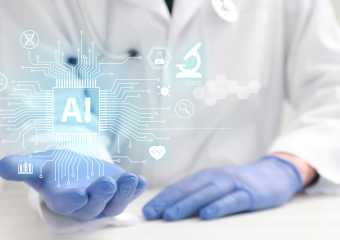Driving Smarter: How AIoT Is Reinventing Mobility and Diagnostics
AIoT and the Future of Transportation
The integration of Artificial Intelligence (AI) with the Internet of Things (IoT), known as AIoT, is paving the way for revolutionary changes in the domain of mobility and vehicle diagnostics. This powerful combination is not merely altering how vehicles operate but is also enhancing how we monitor and maintain them. This leap in technology promises safer, more efficient, and smarter transportation systems across the globe.
What is AIoT?
AIoT combines AI technologies with the IoT infrastructure to create intelligent systems that not only connect different devices but also enable them to communicate, analyze, and make decisions with minimal human intervention. In the context of mobility, this means cars, buses, and trucks equipped with sensors and interconnected via the internet, can collect and process data in real-time to enhance performance, safety, and user experience.
Enhancing Vehicle Diagnostics through AIoT
AIoT Enhancing Vehicle Diagnostics
One of the most impactful applications of AIoT in mobility is in the field of vehicle diagnostics. Traditionally, diagnosing a vehicle’s issue required significant human effort, involving manual checks and tools to diagnose performance issues. Today, AIoT streamlines this process drastically.
Vehicles equipped with AIoT technologies have numerous sensors that monitor various components such as the engine, transmission, brakes, and exhaust systems. These sensors collect data continuously, which AI algorithms analyze to predict potential issues before they escalate into serious problems. For instance, AI can detect an anomaly in the engine’s performance indicators, such as temperature or pressure deviations, and alert the driver or the maintenance team proactively. This not only helps in preventing vehicle breakdowns but also significantly reduces maintenance costs and downtime, ensuring that both individual vehicle owners and fleet managers benefit immensely.
Revolutionizing Traffic Management with AIoT
AIoT also plays a crucial role in transforming traffic management systems. Smart traffic lights and sensors installed at intersections gather data regarding traffic flow, pedestrian movements, and vehicle types. This data, processed through AI models, allows for real-time adjustments to traffic light timings, thereby reducing congestion and enhancing road safety. Furthermore, AIoT enables city planners to understand traffic patterns and plan infrastructure accordingly to optimize road use and minimize bottlenecks.
Improving Road Safety
Safety is a paramount concern in mobility, and AIoT contributes significantly in this area. Advanced driver-assistance systems (ADAS) that combine AI with IoT sensors can detect obstacles on the road, anticipate hazardous conditions, and either alert the driver or take emergency actions themselves (like automatic braking). By doing so, AIoT reduces the chances of accidents and enhances the overall safety of the commuting populace.
Sustainable and Efficient Mobility Solutions
Creating Sustainable and Efficient Mobility Solutions with AIoT
AIoT not only enhances safety and diagnostics but also plays a vital role in making transportation more sustainable. Electric vehicles (EVs), integral to the sustainable mobility conversation, benefit greatly from AIoT. These vehicles rely on complex systems that require constant monitoring and adjustments based on battery performance, driving patterns, and energy usage. AIoT systems analyze this data to optimize battery usage and enhance the vehicle’s range, thereby addressing one of the most significant barriers to EV adoption.
Moreover, AIoT can streamline route planning for various forms of transport to avoid unnecessary fuel consumption and reduce emissions. For logistics and delivery companies, this technology offers potential reductions in operational costs and environmental impact by optimizing delivery routes and loads.
Challenges and Considerations
Despite its numerous advantages, the deployment of AIoT in mobility does come with its set of challenges, including data security and privacy concerns, the need for robust infrastructure, and the potential for technological unemployment in traditional roles. Addressing these issues requires concerted efforts from technology developers, policymakers, and stakeholders to ensure that AIoT’s integration into mobility is beneficial and secure for all parties involved.
Conclusion
As we journey into the future of transportation, AIoT stands out as a beacon of innovation, bringing about monumental shifts in how vehicles operate and interact with their surroundings. This technology is not only setting the stage for more intelligent vehicles and roads but is also steering us towards a safer, more efficient, and sustainable future. The road ahead looks promising, with AIoT leading the charge in reinventing the wheels of mobility and diagnostics.





